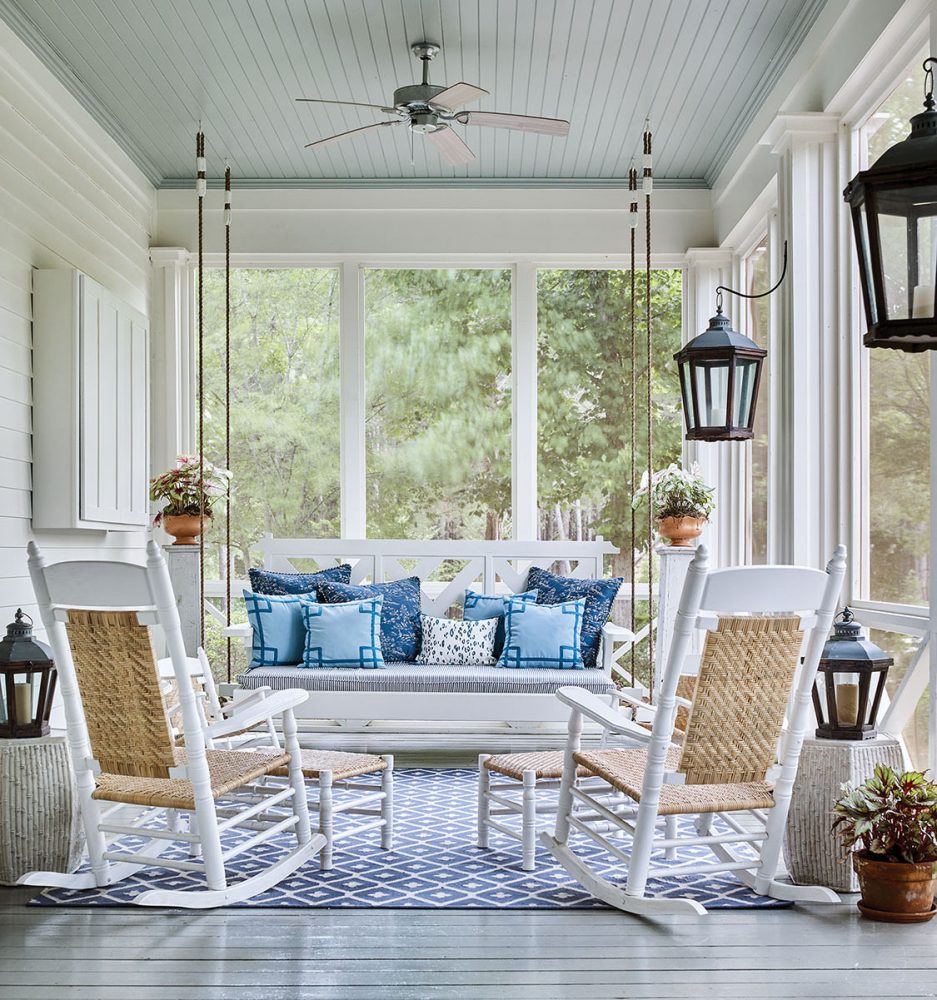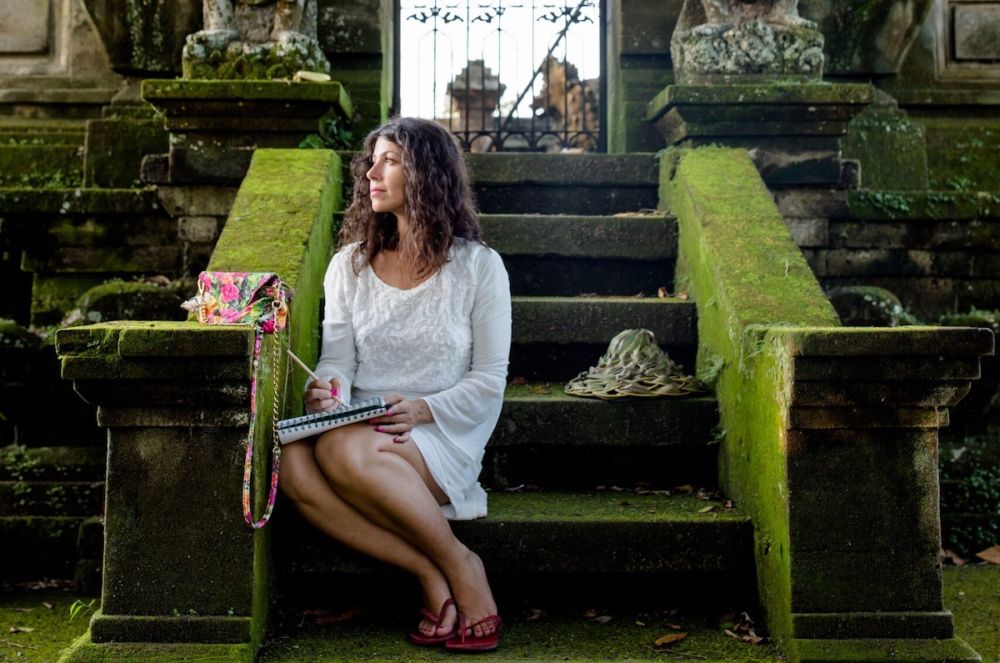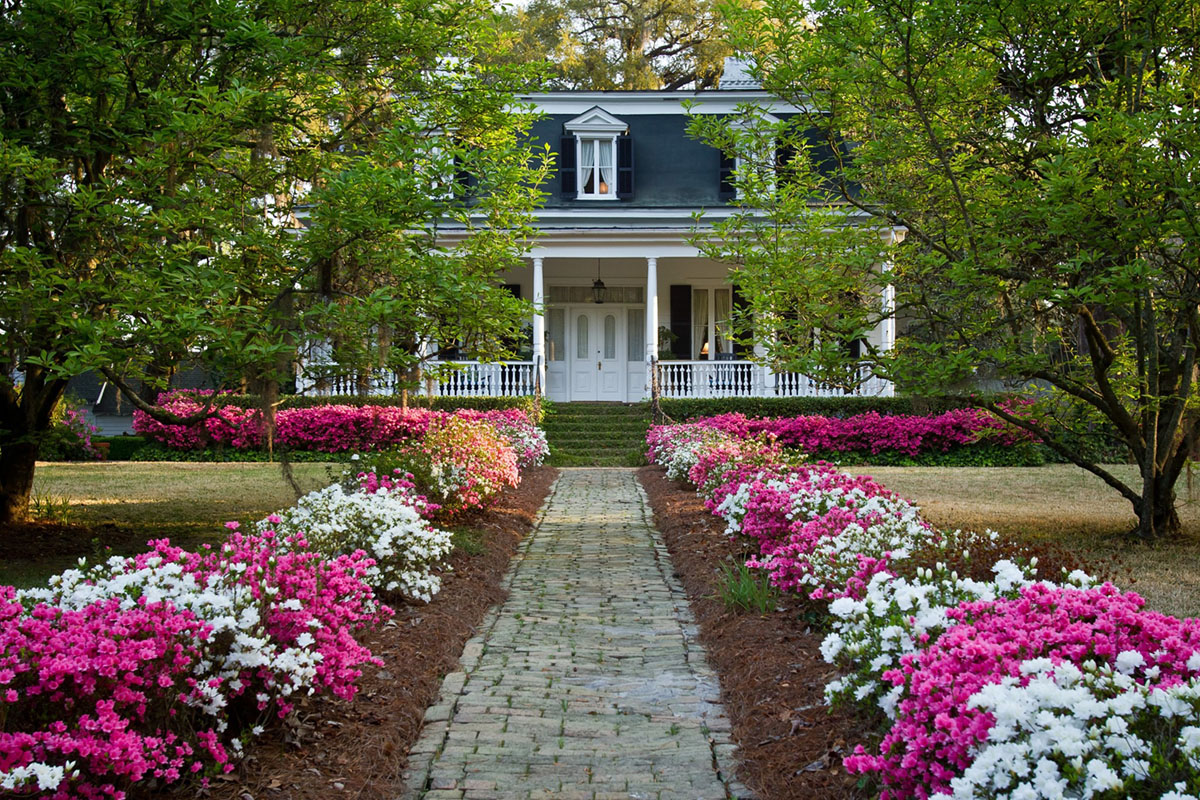
An azalea-lined brick path leads to one of Summerville’s many historic homes. Photography courtesy of Visit Summerville
When you arrive in the quaint town of Summerville, South Carolina, a short distance from Charleston, a few characteristics immediately stand out: the gracious porches and gardens of its historic homes and bed-and-breakfasts, the idyllic Main Street complete with a 1920s soda fountain at Guerin’s Pharmacy—and a boundless love for all things sweet tea, from a larger-than-life mural downtown to the Sweet Tea Pecan Pie served at Baker’s BBQ. Welcome to the Birthplace of Sweet Tea.
Of course, “no one can say when was the first time someone mixed tea and ice and sugar together,” says William Rizzo, editor and publisher of the local Azalea Magazine. “But it’s evident that in America, Summerville has the richest tea history.” In a 2010 Azalea cover story, Rizzo was the first to champion the nickname for the town, which became its official tagline in 2013, but the origin of this story goes back centuries, beginning with the arrival of a very special camellia.
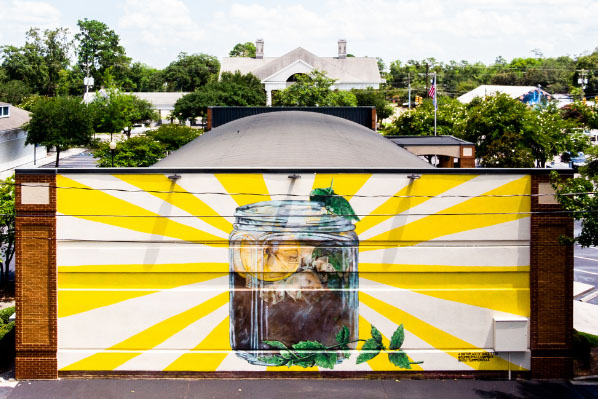
The Birthplace of Sweet Tea Mural by Kevin Morrisey is a favorite spot for selfies.
A CUP OF TEA HISTORY
With its simple, open-faced white flowers and oversized yellow centers, the unassuming Camellia sinensis may not be the showiest camellia around, but its magic resides in its leaves—the botanical treasure that gives us green, black, and oolong tea. When French explorer and botanist Andre Michaux brought the first of these camellias to the U.S. from China near the end of the 18th century, it was hoped that South Carolina’s climate would prove ideal for commercial tea production.
Michaux planted those first tea plants, along with other camellias, at Middleton Place, between Summerville and Charleston. More than two hundred years later, some of those camellia bushes still grow there today; however, commercial tea production would remain elusive, even after a governmental attempt in Summerville in 1884.
That all changed when a scientific philanthropist named Dr. Charles Shepard set his sights on the task in 1888. After his oolong, grown and produced in Summerville, won “Best Tea” at the 1904 St. Louis World’s Fair, the town became forever rooted in tea history. Soon tourists, including President Theodore Roosevelt, began arriving to witness Dr. Shepard’s successful tea operation, which would continue for the next 11 years.
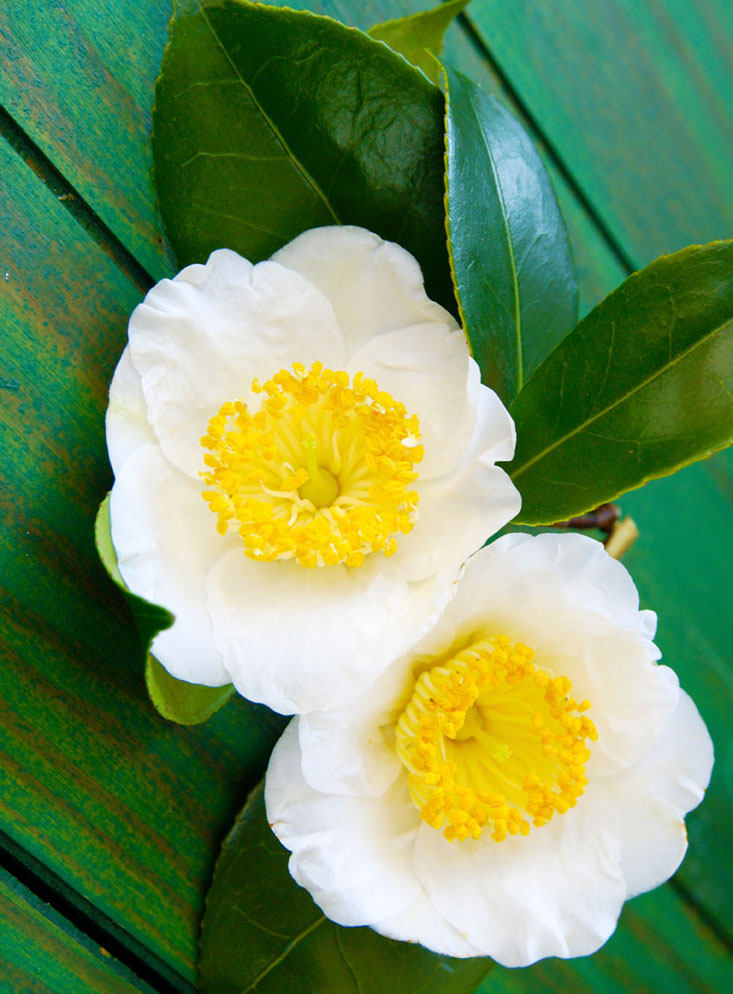
Flowers of the Camellia sinensis. Photo by Natalia van D / Shutterstock
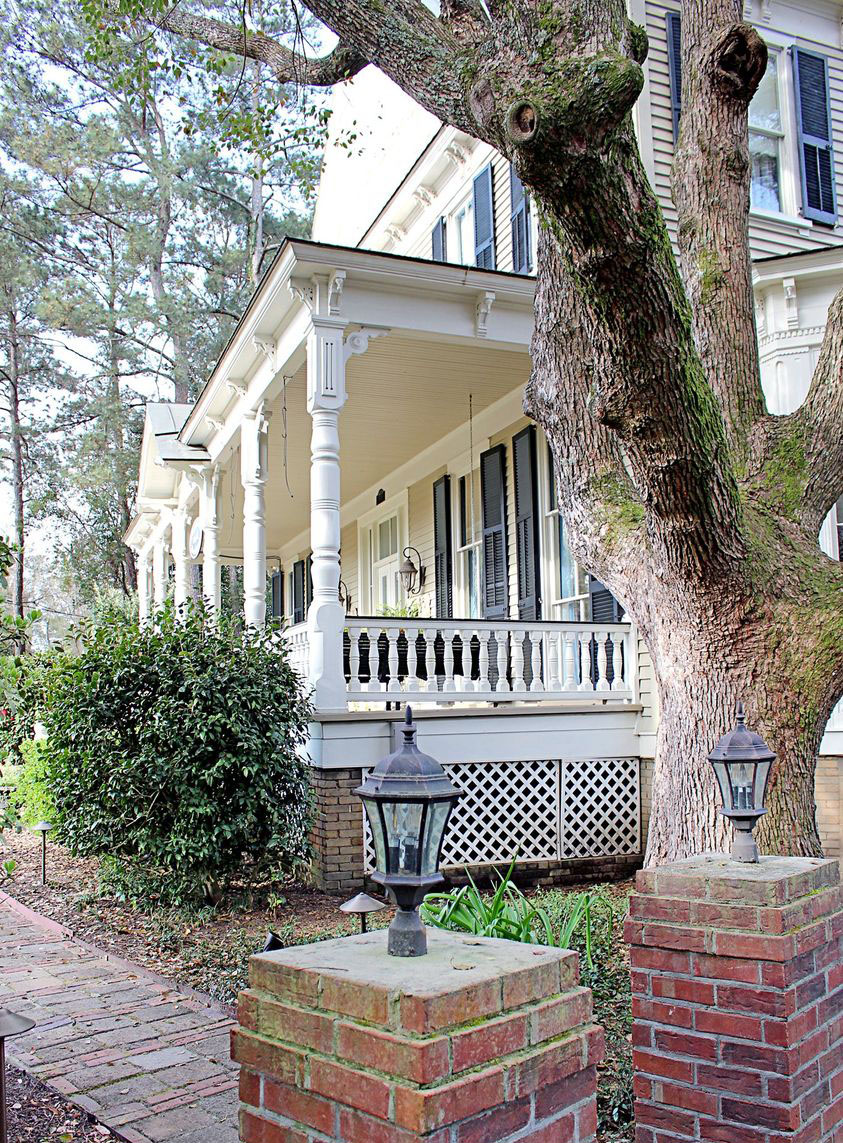
Flowertown Bed and Breakfast, built in 1889, honors Summerville’s other nickname. See more places to stay.
Then in the 1960s, the Lipton Company purchased the property and brought the plants to a new research farm on Wadmalaw Island, a short distance away. However, American tea would not return to the market again until William Barclay Hall, a London-trained, third-generation tea taster, purchased Lipton’s 127-acre farm in 1987 and began selling his “American Classic” tea made from derivatives of Dr. Shepard’s tea plants.
Known today as the Charleston Tea Garden—and owned by the Bigelow Tea Company, with Hall remaining at the creative helm—the farm continues the legacy that Dr. Shepard began in Summerville so many years ago. The Charleston Tea Garden’s brew has even earned the distinction of being named an Official White House Tea and the Official Hospitality Beverage of South Carolina.
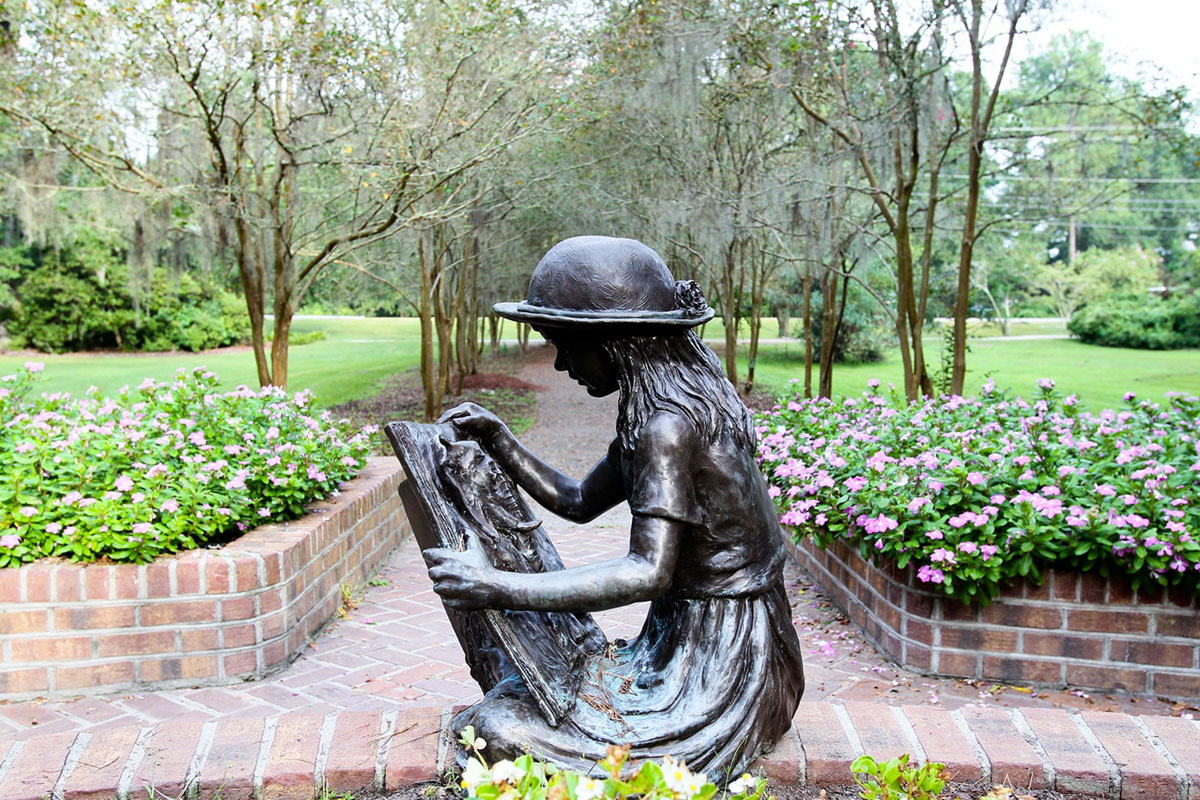
More than just sweet tea—Summerville’s Azalea Park is the starting point for the self-guided Historic Homes and Gardens Walking Tour. The bronze sculpture For Wind and Waves by Robert Allison is located on the east side of the park.
THE SWEET TEA TRAIL
Rizzo with Azalea Magazine knew he was stepping out “on a pretty thick limb” when he boldly proclaimed Summerville’s right to the title “the Birthplace of Sweet Tea” in 2010. Nevertheless, the town was ready to back it up with a demonstration of community and spirit that is itself part of the local charm.
Summerville has broken the Guinness Book of World Record for largest tea twice, once in 2015 and again in 2016. You can see the current record-holding vessel, “Mason,” standing more than 15 feet tall and capable of holding 2,524 gallons of sweet tea, on display on Main Street.
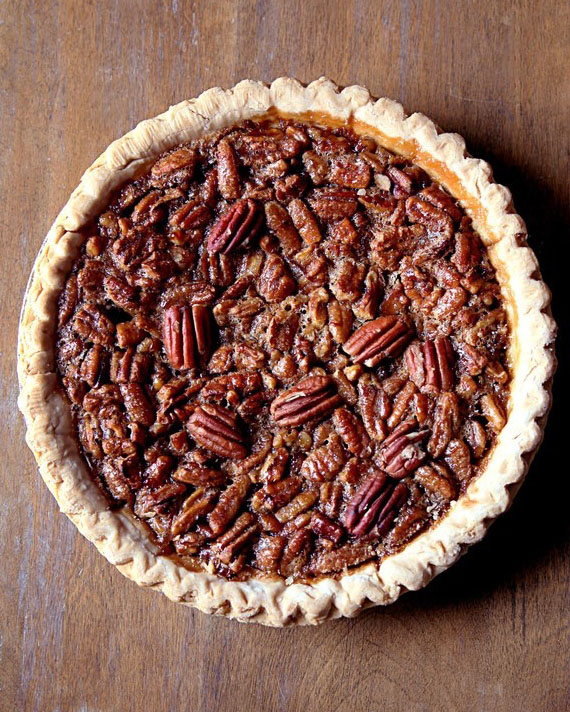
Sweet Tea Pecan Pie at Baker’s BBQ. Explore more places to eat and drink in Summerville.
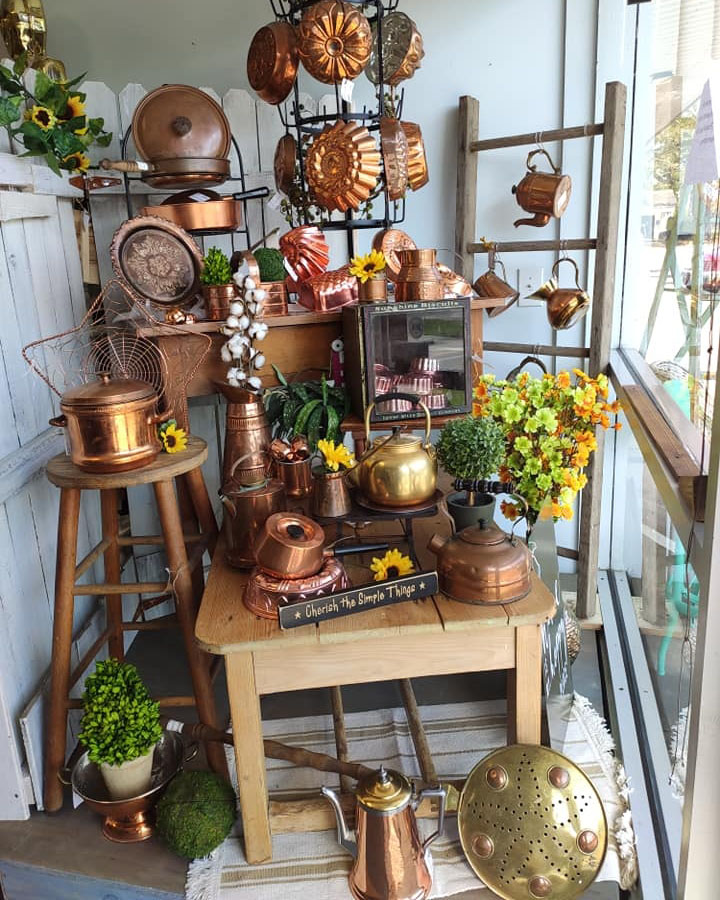
Copper kitchenware, including tea kettles, at Vintage Vibes. Find more antiques shops on the Sweet Tea Trail.
The local shops have joined the fun, too, selling sweet tea candles, jellies, lotions, hand towels, clothing, and more. At Hanebrink Jewelers, you can pick up an exquisite replica of a tea leaf from the Charleston Tea Garden in the form of a sterling silver or brass pendant, while at Summerville Antique Gallery, you can browse their special collection of vintage teapots and teacups. To experience it for yourself, just follow the Sweet Tea Trail, a guide to the sites, shopping, and places to eat and drink.
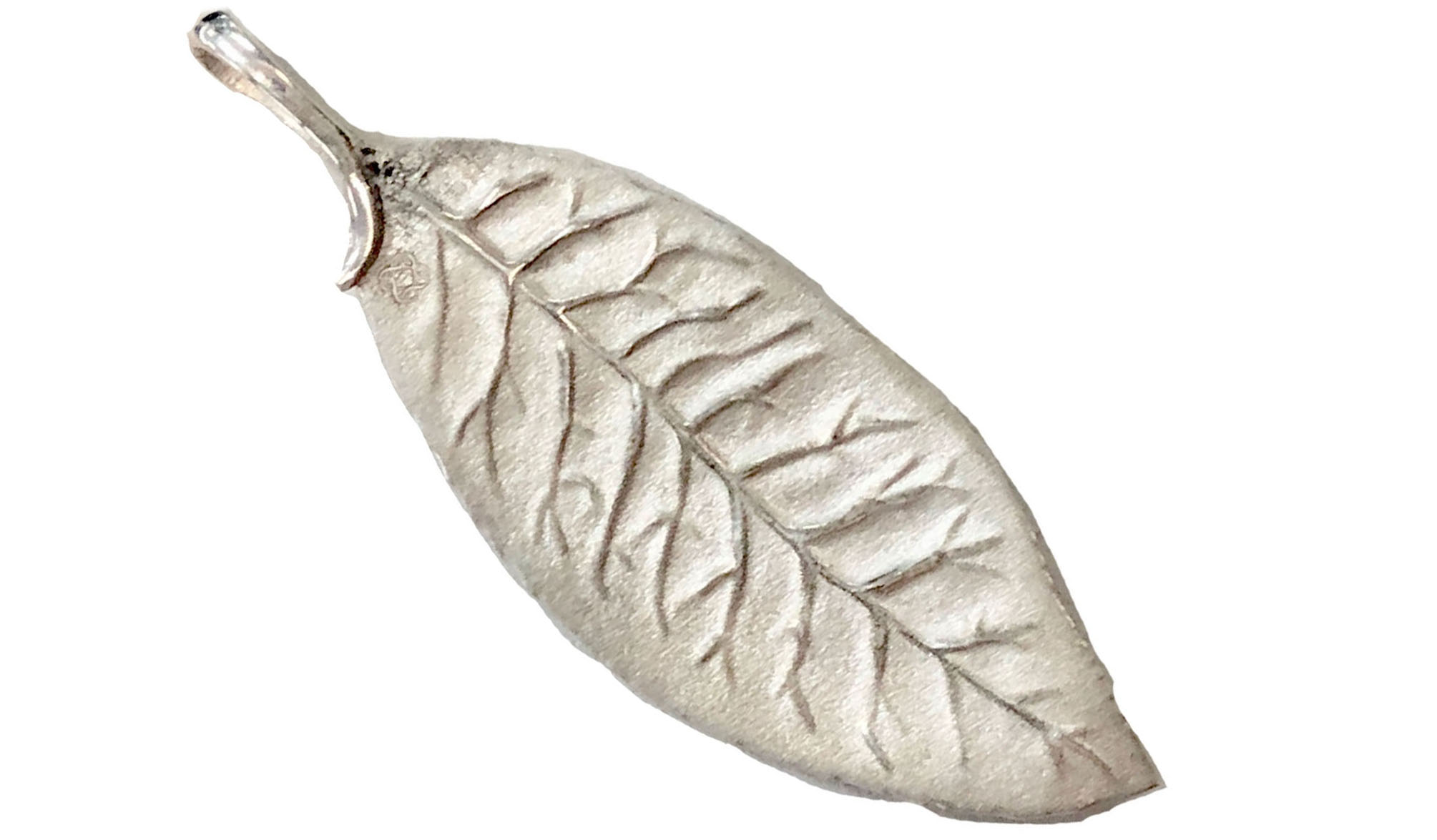
Sterling silver tea leaf pendant from Hanebrink Jewelers
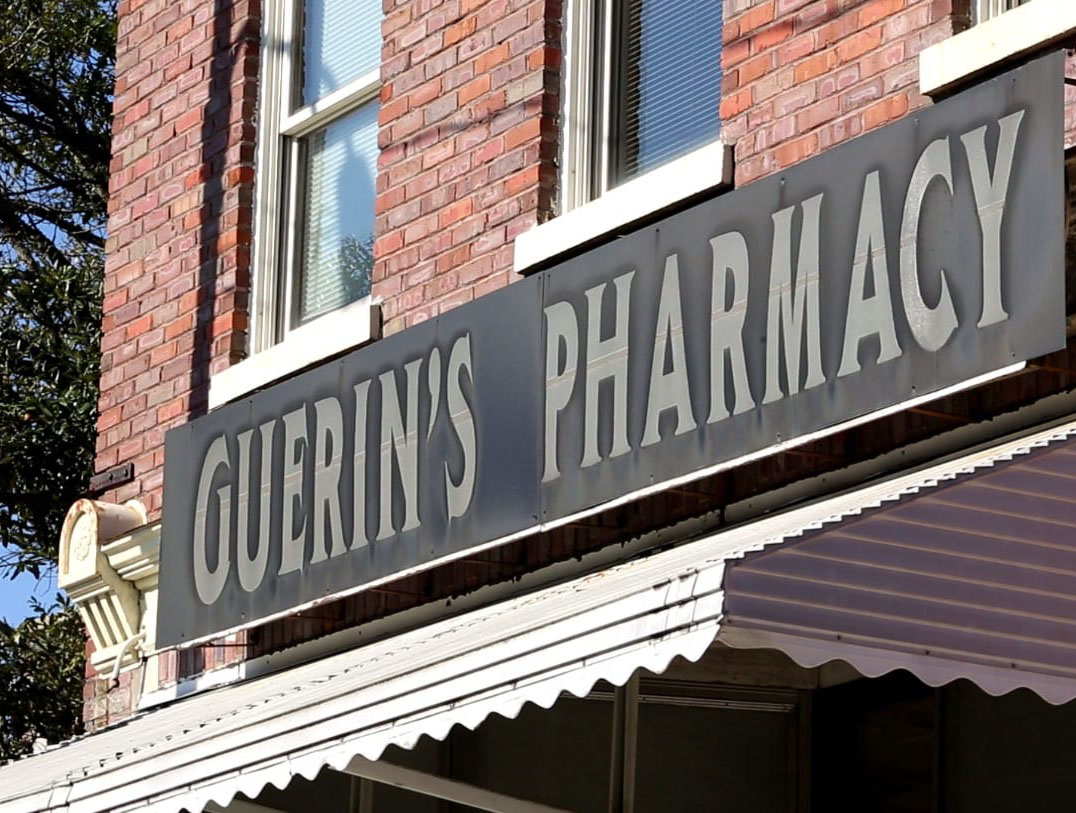
Guerin’s Pharmacy, founded in 1817, is South Carolina's oldest pharmacy and home to Summerville's soda fountain.
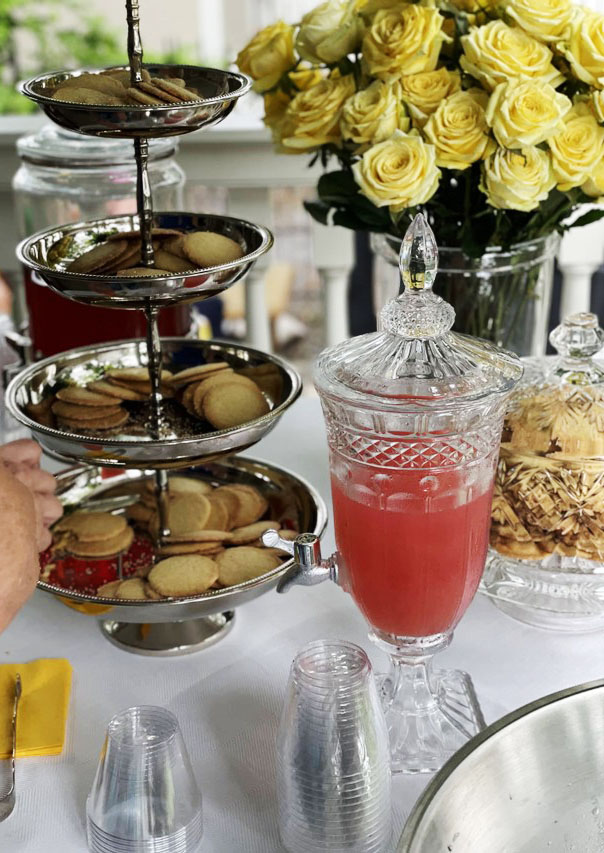
During Porch Stroll, an annual June event, visitors can sit and enjoy refreshments on the town’s most beautiful porches, along with music, local art, and other festivities.
The events also tend to be sweet tea-themed, including the Sweet Tea Festival each fall and the Porch Stroll in June, where the festivities include sipping the refreshing beverage on the town’s most beautiful Southern porches.
Of course, it’s not all about sweet tea. (Summerville’s other nickname is Flowertown after all.) “If a town can come up with something as great as sweet tea,” says Rizzo, “imagine all the other things that are great about the town.” Come see.
Sponsored by Visit Summerville; supported by Discover SC. Plan your visit at visitsummerville.com. Follow @visitsummerville on Facebook and Instagram.
By Terri Robertson


